- Home
- Feature Articles
- Postales desde la Antártida
Postcards from the Antarctica
Monday, December 19, 2016
Number: 39
This month, the Spanish Army deploys in the Antarctica its 30th contingent after 29 years of the mission opening.
Just like an avalanche; that is how the Spanish Army Antarctica Campaign has been growing since its first edition in the Austral summer, back in 1987-88. Similar to a fresh snowball getting bigger and bigger thanks to the effort, sacrifice, and good work of dozens of military personnel. They have been working for almost 30 years (either in situ or from Spain) on the great success of this mission. And thanks to it, Spain is a full member of the Antarctic Treaty.
The 30th Spanish Army contingent, which this month deploys on the white continent, will recondition the “Gabriel de Castilla” base´s infrastructure by setting up a warehouse so the different already deployed containers can be stored in one same place. This will make the storage more efficient and will allow to repatriate to Spain those containers that are useless and, because of their degree of oxidation, do not comply with the environmental regulations in force. Therefore, 4 members of the Infrastructure Management are collaborating with them.
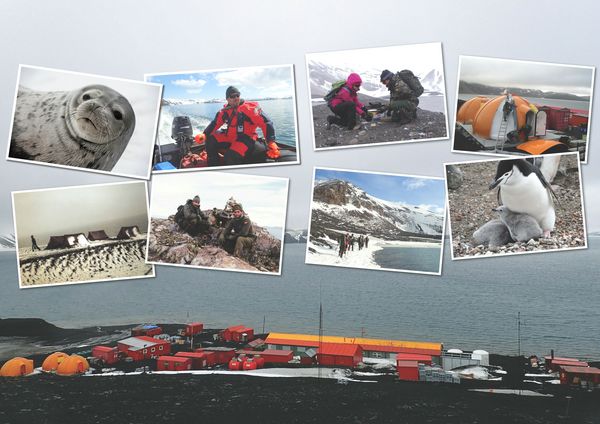
View of the Gabriel de Castilla station
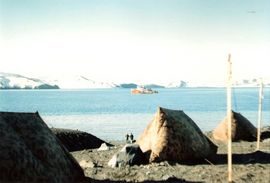
The Antarctic campaign 1989-90
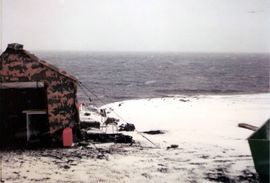
The Antarctic campaign 1989-90
Besides, the members of the contingent will work on different Spanish Army projects of highly interest such as: a cogenerator prototype (logistics innovation Army 2016 award), a new VHF communication system and an HF data modem or the transmission data setting up during the base closing time. According to major Vélez, chief of the 30th contingent, this campaign is going to have a huge workload. The scientific community is going to be big; besides their own projects (especially in communications and facilities building), there is an estimate of 35 researchers and the life module has place for 28; that means, a higher demand of support to the researcher (there are 8 simultaneous projects) and an adaptation to live in small places.
Besides this increase in the scientific support and in the improvements in the life conditions, another change noticed these last years is the funding model. Currently, the Spanish Army takes good care of its finance thanks to a deal with the Spanish Department of Economy, Industry and Competitiveness and Banco Santander (Spanish international bank) both mentioned entities are funding the needed amount for the mission.
Some of the participants tell us about their work.
LTG Francisco Javier Varela
1987-88 Campaign.
His job: Mountain.
He says:«Six Spanish Army officials took part in the first campaign. They came here with little time training. Hence, the need to prepare a program of training activities, for following missions in order to be better prepared, was identified. Also, a careful selection of personnel due to the weather inclemency over there and the need to teamwork long hours in small places. Over there, I experienced lots of emergency situations for survival. I was part of a diving team, I worked with pick and shovel to improve the access to the Juan Carlos I station…»
General Manuel José Guiote
1987-88 Campaign.
His job: Healthcare
«I got a call when I was working as captain at the Military Hospital of Ceuta. I was asked if I wanted to be part of the first Antarctica expedition. The full membership of Spain in the Antarctic Treaty to which the most influential countries of the world belong to. I took a step ahead and right away I made lists of material, medicines… Fortunately, the Spanish Army had modern and mobile healthcare material good for advanced stabilization in situ. From the following campaign, medical checks before the mission were mandatory to discard risk personnel.»
Antonio Quesada
Polar Research National Program
Autónoma University, Madrid, Spain
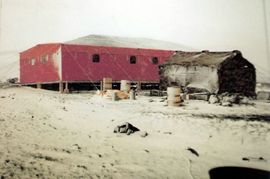
The Antarctic campaign 1989-90
«The Spanish Army has been having a key role from the first expeditions. An essential role advising in technical matters and keeping safe and secure the expeditions. The Army took a very active part gathering data for the topographical surveys in different parts of Antarctica. A great momentum was the opening of the, back then called refuge, “Gabriel de Castilla”. The scientist considered that without military personnel, they would not be able to carry out research in the Antarctica. Likewise, it is outstanding the enthusiasm of the members of the mission, their professionalism, kindness, and teamwork. Many times a strong and long-lasting friendship born.»
Colonel Sánchez Loureiro
Chief of the 19th Antarctic campaign.
«The Antarctic campaign offers an unsurpassable opportunity to value the capabilities and the spirit of giving and devotion of the Spanish Armed Forces before an expert public with Academics and research influence power. Having identified this opportunity and having taken advantage with the Public Communication Campaign has been an impressive success. Also, having done all the pertinent procedure’s to guarantee the efficient, agile, and coherent development of the mission. In this sense, the creation of the Antarctic Campaign Office within the Logistics Brigade has been key.»
Lieutenant Colonel Fernández
Technical Secretariat of the Operations División
«The Spanish Army Operations Division is in charge of the relations with the Spanish Polar Committee and other government institutions. Within its duties, to pass the goals of the campaign, select the contingent chief, and define all the other positions. Besides, the Division needs to get funds (currently, private and public funds) and approve yearly budgets. It is in charge as well of approving military research projects with the pertinent material needed to be purchased, the tasks to be done at the base and the capabilities training program to be done by the members of the contingent.»
Major Vélez
Chief of the 30th Antarctic Campaign
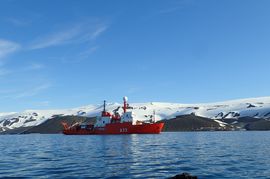
Oceanographic research vessel Hespérides
«In the 30th Antarctic Campaign edition we are going to cooperate for the first time with the University Defense Center (CUD, in Spanish) in Zaragoza. It is a common project of a 3D printer. The need to get plastic materials in a short time and the non-sustained logistics to get them, makes us send to the Spanish Defense University Center that need for the design; they send to us the data and we make it at the base. The idea is to be the beginning of a permanent service. A part from this project, we are into other projects of aerosols measurements with 2 CUD professors from the Zaragoza University team.»
ARMY UNITS
- Araba Álava |
- Albacete |
- Alicante |
- Almería |
- Asturias |
- Ávila |
- Badajoz |
- Barcelona |
- Burgos |
- Cáceres |
- Cádiz |
- Cantabria |
- Castellón |
- Ceuta |
- Ciudad Real |
- Córdoba |
- A Coruña |
- Cuenca |
- Girona |
- Granada |
- Guadalajara |
- Gipuzkoa |
- Huelva |
- Huesca |
- Islas Baleares |
- Jaén |
- León |
- Lleida |
- Lugo |
- Madrid |
- Málaga |
- Melilla |
- Murcia |
- Navarra |
- Ourense |
- Palencia |
- Las Palmas |
- Pontevedra |
- La Rioja |
- Salamanca |
- Segovia |
- Sevilla |
- Soria |
- Tarragona |
- Santa Cruz de Tenerife |
- Teruel |
- Toledo |
- Valencia |
- Valladolid |
- Bizkaia |
- Zamora |
- Zaragoza



